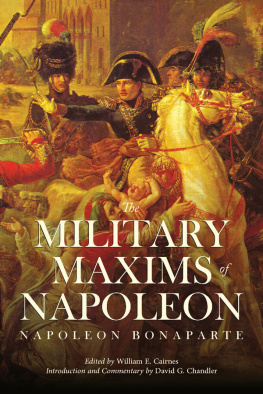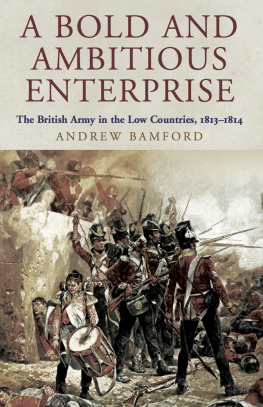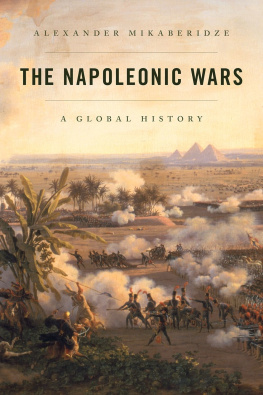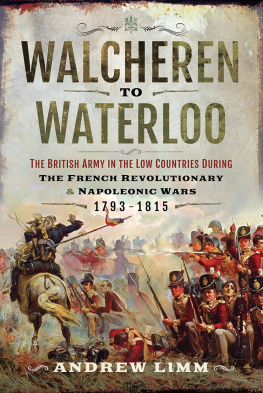

First published in Great Britain in 2013 by
The Praetorian Press
an imprint of
Pen & Sword Books Ltd
47 Church Street
Barnsley
South Yorkshire
S70 2AS
Copyright Jonathon Riley 2013
9781783468706
The right of Jonathon Riley to be identified as Author of this Work has been asserted by him in accordance with the Copyright, Designs and Patents Act 1988.
A CIP catalogue record for this book is available from the British Library.
All rights reserved. No part of this book may be reproduced or transmitted in any form or by any means, electronic or mechanical including photocopying, recording or by any information storage and retrieval system, without permission from the Publisher in writing.
Typeset in 11/13 Ehrhardt by Concept, Huddersfield, West Yorkshire Printed and bound in England by CPI Group (UK) Ltd, Croydon, CRO 4YY
Pen & Sword Books Ltd incorporates the Imprints of Pen & Sword Aviation, Pen & Sword Family History, Pen & Sword Maritime, Pen & Sword Military, Pen & Sword Discovery, Wharncliffe Local History, Wharncliffe True Crime, Wharncliffe Transport, Pen & Sword Select, Pen & Sword Military Classics, Leo Cooper, The Praetorian Press, Remember When, Seaforth Publishing and Frontline Publishing.
For a complete list of Pen & Sword titles please contact
PEN & SWORD BOOKS LIMITED
47 Church Street, Barnsley, South Yorkshire, S70 2AS, England
E-mail: enquiries@pen-and-sword.co.uk
Website: www.pen-and-sword.co.uk
List of Plates
Black and white
Plate 1. The senior commanders of the sixth Coalition in Central Europe
Plate 2. Napoleon in 1813
Plate 3. King Ferdinand VII in prison at Valenay
Plate 4. British infantry at Vitoria, 21 June 1813
Plate 5. The Passage of the Bidassoa River
Plate 6. a and b. A Cossack and a Bashkir drawn from life in 1813 by William Schadow
Plate 7. The Battle of Castalla, 11-12 April 1813
Plate 8. The Battle of Dresden, 26-27 August 1813
Plate 9. Soldiers on the March to Buffalo. American troops and their camp followers
Plate 10. Fort George, the British headquarters in Upper Canada
Colour
Plate 1. French conscripts
Plate 2. An English recruiting party
Plate 3. British soldiers of the 6th (Warwickshire) and the 23rd (Royal Welch Fusiliers) in the uniform of 1813
Plate 4. The British Royal Artillery in the uniform of 1813
Plate 5. The British Royal Wagon Train in the uniform of 1813
Plate 6. Line infantry soldiers and a light dragoon of the Kings German Legion in the uniform of 1813
Plate 7. Infantry soldiers and a hussar of the Duke of Brunswick-Oelss Corps in the uniform of 1813
Plate 8. The Battle of Lutzen, 2 May 1813
Plate 9. Tsar Alexander I, the Emperor Francis I of Austria and King Frederick William III of Prussia meet at the opening of the Congress of Prague
Plate 10. Wellington at the Battle of Vitoria, 21 June 1813
Plate 11. Boney Receiving an Account of the Battle of Vittoria, by George Cruikshank
Plate 12. Austrian troops storming a redoubt at the Battle of Dresden, 26 August 1813
Plate 13. The Battle of Leipzig, 18 October 1813
Plate 14. Close-quarter fighting at Leipzig on 18 October 1813
Abbreviations
| C.O. | Colonial Office |
| C.S.P.D. | Calendar of State Papers, Domestic Series |
| K.B. | Knight of the Most Honourable Order of the Bath |
| K.G. | Knight of the Most Noble Order of the Garter |
| MS, MSS | Manuscript(s) |
| S.P. | State Papers (followed by numeral denoting series) |
| T.N.A. | The National Archive (formerly the Public Record Office (P.R.O.)), Kew |
Foreword
I first wrote about the campaigns of 1813 in my 1998 book Napoleon and the World War of 1813: Lessons in Coalition Warfighting. Since then I have learned more about those campaigns, especially through writing Napoleon as a General in 2007. Through my own experiences in Iraq and Afghanistan, I have also learned more about the nature of alliances and coalitions. Much of the basic research that I carried out remains, however, sound. Since I retain the copyright of this material I have not hesitated to use it, although considerably edited, in this book. Since this book is primarily about the downfall of Napoleon at the hands of the allies in Central Europe and Spain, I have not gone into any depth about the war in North America, merely setting out its place in the context of the global war against Napoleon; nor have I done more than sketch the supporting campaign in Valencia and Catalonia. I have, however, provided new maps to support the narrative and many new illustrations, some of which are published for the first time.
Acknowledgements
I would like to acknowledge with thanks for their help and patience the following people and organisations: Rupert Harding and the staff at Pen and Sword; Dr Malcolm Mercer and the staff of the Royal Armouries in H.M. Tower of London; Mr Philip Abbot, Mr Stuart Ivison and the library staff of the Royal Armouries in Leeds; the staff of the National Archives, Kew; the staff of the British Library; the staff of the Bodleian Library in Oxford; the staff of the Brotherton Library at the University of Leeds; Deutsche Fotothek SLUB for Napoleon in 1813, by Gnter Rapp; the Stapleton Collection and the Bridgeman Art Library for The French Conscripts and The Passage of the Bidassoa; Science, Industry and Business Library, New York Public Library, Astor, Lennox and Tilden Foundations for The Recruiting Party; Bildarchiv Preussicher Kulturbesitz/Kunstbibliothek, SMB/Knud Petersen for The Meeting of the Allied Sovereigns at the Congress of Prague; the Trustees of the British Museum for Boney Receiving an Account of the Battle of Vittoria; Sammlung Hecht Collection and the Bridgeman Art Library for The Battle of Dresden; Bibliotheque Marmottan, Boulogne-Billancourt, Paris, France/Giraudon and the Bridgeman Art Library for The Battle of Leipzig; William L. Clements Library, University of Michigan for Soldiers on the March to Buffalo and Fort George. Last but not least, my thanks go to Steve Waites, who drew all the maps to a high standard, as he has done with my last six books.
Chapter 1
Europe Re-arms: the Aftermath of Napoleons Crisis in Russia, December 1812March 1813
... We must conquer or be annihilated
The 29th Bulletin of the Grande Arme, issued from Molodetchno close to the Polish border on 3 December 1812, reached Paris on 16 December. In it Napoleon confessed that a disastrous calamity had all but destroyed the army in Russia, so that only his personal presence in Paris would forestall the consternation, perhaps even panic, that the Bulletin would cause. On 5 December 1812, therefore, the defeated French Emperor left his army at Smorgoni, appointing Marshal Joachim Murat, the King of Naples, to command the 60,000 or so men who represented all that was left of the Grande Arme after the debacle: perhaps one tenth of the total force of many nations that had set out the previous summer. Many have criticised his decision to leave the army but as Napoleon himself saw matters, it was the only thing to do. The Russians were in pursuit, albeit cautiously; Prussia and Austriaand therefore much of the rest of Germanywere showing signs of unreliability; and his implacable enemies the English continued their war against him both at sea and in Spain. Another army had to be raised, and quickly.









